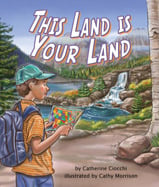Alignment to Standards for WA

| Grade | Number | Standard |
|---|---|---|
| 1 | 3.1.1 | Understands and uses maps and globes to identify major bodies of water and continental land masses. |
| 1 | SS-1.3.1 | Understands the physical characteristics, cultural characteristics, and location of places, regions, and spatial patterns on the Earthês surface |
| 1 | SS-1.3.1.1 | Understands and uses maps and globes to identify major bodies of water and continental land masses. |
| 1 | SS-1.3.1.1a. | Uses a map or globe to identify the location of the continents and major bodies of water. |
| 1 | SS-1.3.1.1b. | Explains how maps and globes can be used to locate the continents where families live. |
| 2 | 3.1.1 | Understands and applies basic mapping elements such as compass rose, labels, and a key to read and construct maps that display information about neighborhoods or local communities. |
| 2 | SS-2.3.1 | Understands the physical characteristics, cultural characteristics, and location of places, regions, and spatial patterns on the Earthês surface |
| 2 | SS-2.3.1.1 | basic mapping elements such as symbols, compass rose, labels, and a key to read and construct maps that display information about neighborhoods or local communities. |
| 2 | SS-2.3.1.2a. | physical characteristics such as rivers, lakes, mountains, and parks of the community in which they live. |
| 2,3 | 2-3 ES2A | Water plays an essential role in Earth systems, including shaping landforms. |
| 2,3 | 2-3 LS2C | Some changes in ecosystems occur slowly and others occur rapidly. Changes can affect life forms, including humans. |
| 3 | SS-3.3.1.2a. | Explains the physical geography, including landforms and climate, of Mexico, Canada, and the U.S. |
| 4,5 | 4-5 ES2A | Earth materials include solid rocks and soil, water, and gases of the atmosphere. Materials have different physical and chemical properties which make them useful in different ways. Earth materials provide many of the resources that humans use. |
| 4,5 | 4-5 ES2B | Weathering is the breaking down of rock into pebbles and sand caused by physical processes such as heating, cooling, and pressure, and chemical processes such as acid rain. |
| 4,5 | 4-5 ES2C | Erosion is the movement of Earth materials by forces such as wind, moving water, ice forming, and gravity. |
| 4,5 | 4-5 LS2D | Ecosystems can change slowly or rapidly. Big changes over a short period of time can have a major impact on the ecosystem and the populations of plants and animals living there. |